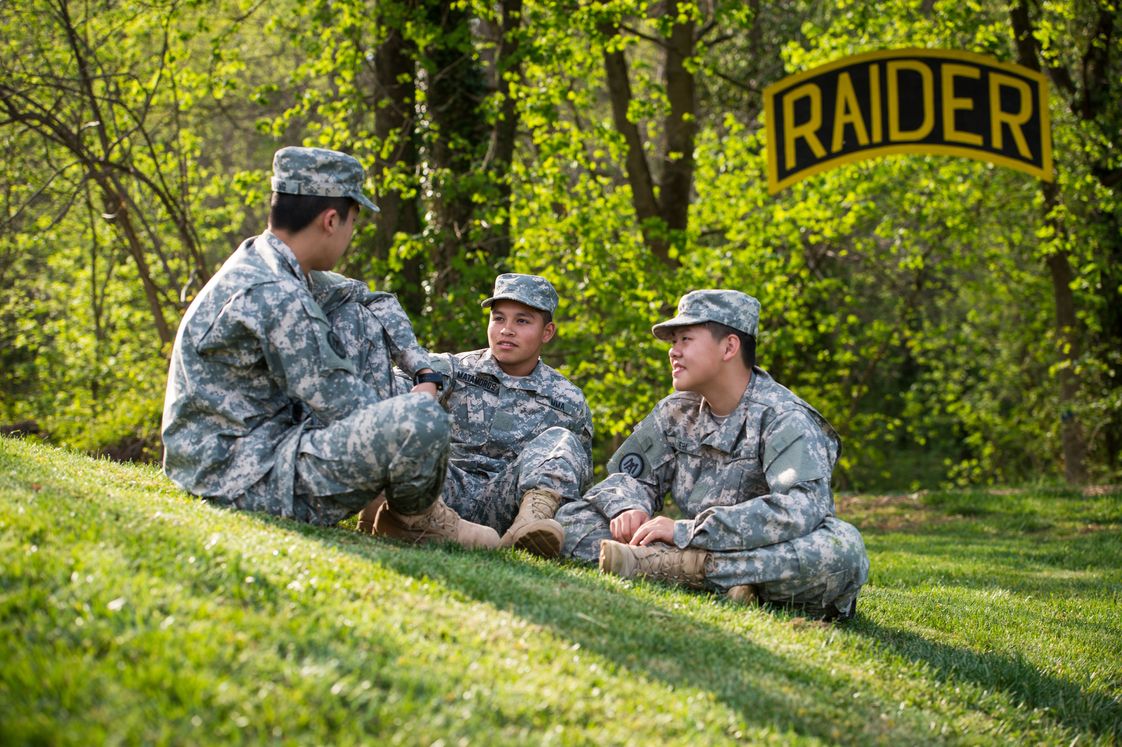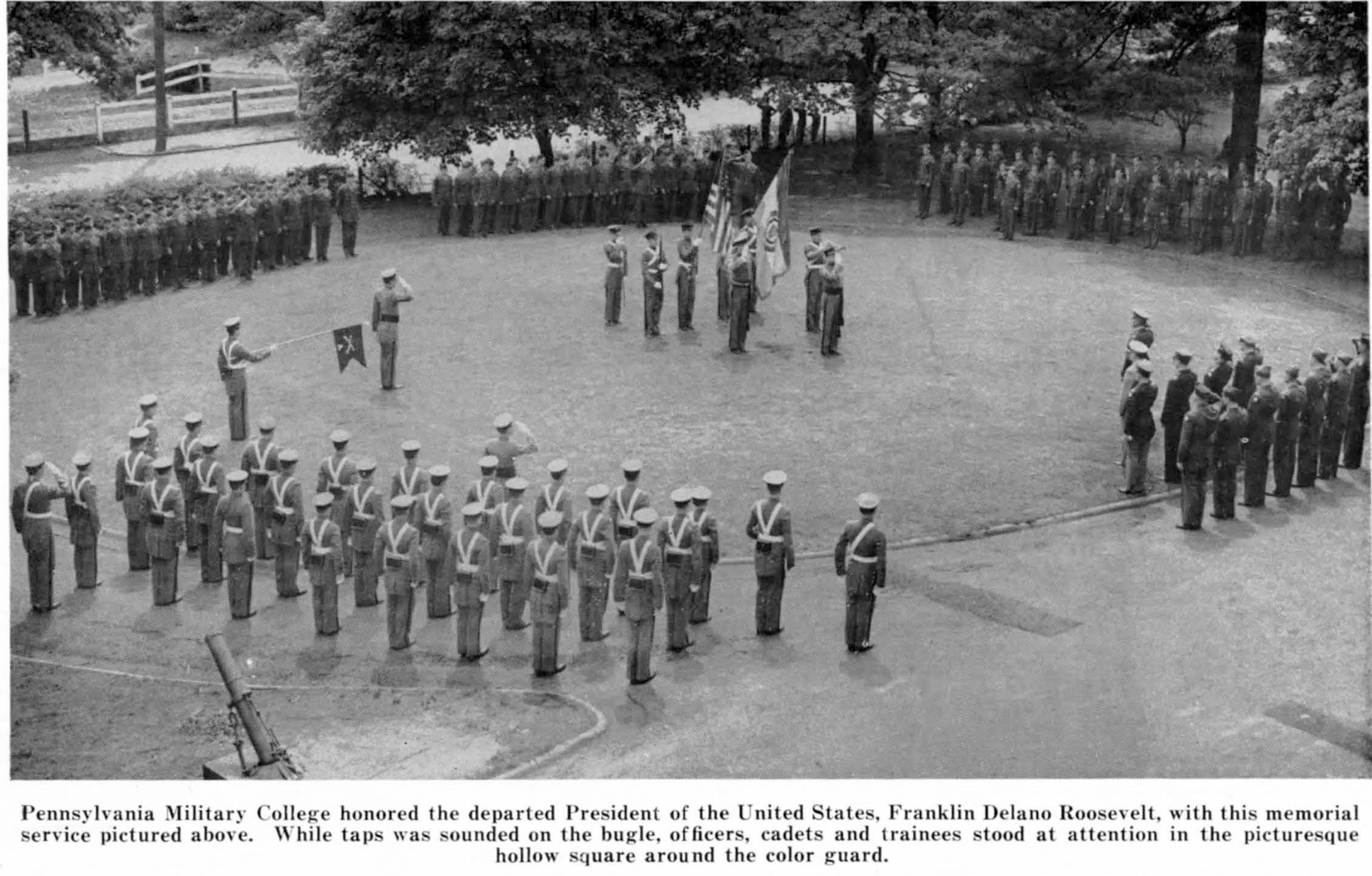Pennsylvania Military Institute - The school moved to Chester in 1865 and occupied the premises of the Crozer Normal School. In 1867, Colonel Hyatt sought a permanent location for the school. After an extensive search, approximately 20 acres with unobstructed views of the Delaware River were selected.
Noted Philadelphia architect John Crump was selected to design the building. His work, including Union Square, is generally considered a prime example of the Philadelphia style in the latter part of the 19th century. The Chester Evening News described the building as "of brick and granite, and measuring about one hundred and fifty feet by sixty-seven feet, and five stories in height. It was not only built in the most basic manner, but ... elaborate and ornate." for the city." On June 24, 1868, the dedication of the building took place during the construction ceremony.
Pennsylvania Military Institute

Shortly after 5 p.m. In February 1882, a fire was discovered in the science laboratory on the fifth floor. Despite everyone's efforts, the building caught fire. The cadets were sent home but returned a few weeks later to resume their studies at the Ridley Park Hotel.
We Were Rooks Once
Reconstruction plans were immediately drawn up. John Crump was again involved in the design and renovation of the new building. The Course Catalog of 1882 described the new building as follows:
It has been enlarged, greatly improved in architectural appearance, and has taken full advantage of the many internal changes suggested by the experience of more than thirty years of school work. The wide staircases which have given such security to the old building have been fitted with suitable fire escapes, and heavy walls have been erected, that it is almost entirely safe from a disastrous fire. The laboratory, located at a safe and convenient distance from the main building, will contain state-of-the-art equipment for testing and research in the applied chemistry departments.
Seven months after the fire, the cadets moved into the new building. Soon the main entrance became known as the "Main Building". It wasn't until the 1900s that it became affectionately known as Old Maine.
A team of Philadelphia architects explored Old Main for 2 months in 1978. They removed remnants of paint, tested the condition of the roof and decorative moldings, examined the stability of the dome and front balustrade, and examined the strength of the stone foundation. After this detailed review of the findings, the National Park Service announced that Old Main and the Chemistry Building had been added to the National Register of Historic Places.
Eisenhower Visiting Pennsylvania Military College (now Widener University) In 1963
Since 1868, Old Main has witnessed the remarkable history of PMC. Today, Old Main continues its silent watch. It has become a tradition in universities to award honorary degrees to distinguish guests. Colonel Hyatt launched an ambitious plan to use this academic tradition to nationally recognize PMC.
Honorary degrees to many notables, including Warren G. Harding (1920), John Philip Souza (1920), General John J. Cecil B. DeMille '98 (1931), J. Edgar Hoover (1936), David Sarnoff (1952), Walter H. Annenberg (1954), and many others. In early 1920, Franklin D. Roosevelt received his jurisprudence. When accepting the diploma, he said in part:
"This is a historic moment for me. receiving this degree at such a prominent American institution. What our country needs today is broad Americanism and visionary leadership. This institution stands on such a thing and that's why its graduates have registered enviable records in all countries.''

For many, receiving an honorary degree from PMC was an honor. In 1933, Colonel Hyatt was invited to visit President Roosevelt at the White House. The president told Hyatt that:
Pennsylvania Military College Face Mask By H. Armstrong Roberts/classicstock
From the time I graduated (1920) I paid as much attention to PMC as if I had actually graduated. I followed PMC sports faithfully in the newspapers and was especially interested in your excellent polo teams. The PMC truly expresses the American spirit and lays the foundation for the kind of Americanism needed to sustain our nation's precious institutions.
In 1924, PMC awarded 64 graduates with Bachelor of Military Science degrees. Judge George T. Kenn stated in 1885 that the graduation was to honor college graduates who had served in an actual war in any branch of the military. Over the next few years, this degree was awarded to another 202 graduates. No aspect of the PMC is more uniformed than the cadet. The cadet in uniform became the symbol of the school and clearly showed that he was a member of the elite group. Clothing was also a force of discipline. How he behaved in public with the uniform became the basis of how the public perceived the school.
Beginning in 1862, the gray cadet uniform became standard. The design was identical to that worn by West Point cadets, except for the school-designed shirt buttons and shields. Each uniform was a hand-sewn garment made to measure using the highest quality fabric supplied by Charlottesville Woolen Mills. This uniform changed little between 1862 and 1972.
To ensure uniformity in appearance and quality, all cadets were required to purchase their uniforms from the M.C. Thackray of Philadelphia. Beginning in 1873, all uniforms were purchased from John Wanemaker of Philadelphia. However, after 1890, uniforms on campus were manufactured and supplied by the Quartermaster Store and eventually by the William Bell Uniform Company of Chester, Pennsylvania.
Vintage Pennsylvania Military College Belt Buckle Original
Each cadet was also expected to wear a "cadet grey" uniform, a gray cap and tails with both gray and white trousers. The standard school and university uniform consisted of a gray cotton shirt, a gray suit, long-sleeved shirts, black ties and gray woolen trousers.' Cadets wore uniform gray trousers and a gray shirt, which was later replaced by a lighter weight material. . In 1963, a light white summer uniform was released.
The PMC class bell is a treasured memory of every cadet's years at school. The symbolism of the ring is well documented and explained for each class before it is acquired. Unfortunately, memories and meanings of symbolism are also lost. The fourth grade handbook provides the following information:
Each ring has an Eagle on both sides. One's head is looking at the future, the other is looking at the future. The eagle that looks into the future has a bigger head than the one that looks into the future, because we can see more from the past than we can predict the future.

It is on one side of the corner stone. It represents the state of Pennsylvania, its central role in the independence decision, which is designated as a major voice, and a primary seat of government.
Eligibility And Admissions
Behind the headstone are two cross arms, bearing the year of graduation. These weapons are our constant struggle to keep up with the times to successfully fulfill our mission.
On the other side is the Great Seal of the United States, which represents the strength and power of our country.
The circle surrounds the Great Seal. This circle represents our never-ending loyalty and commitment to our country.
Behind the great seal are two crossed swords. These embody PMC's proud tradition of high-caliber units.
The U. S. Military Academy Cadet Band Marches Down Pennsylvania Avenue During The Inauguration Day Parade
Beneath the Keystone and the Great Seal are two torches that represent the light of knowledge, both present and future, that we have gained in the PMC.
Both the Keystone and the Great Seal surround a horn. This stands for PMC's motto, "Happiness, Freedom and Independence".
A single star seen between the words Pennsylvania Military College symbolizes the stars of the states in terms of the American flag and its purpose: Union. Before finishing, the star looks inside. When finished, it appears outside.

PMC launches are often attended by thousands of parents, guests of honour, students and citizens of Chester and are often referred to as 'Inspiration! Great Great! Run away! and very big."
These Are Pennsylvania's 25 Most Expensive Private Schools
The ceremony changed little during and after Hyatt's tenure. Every year, events and ceremonies are held over a period of 3 days ending on Commencement Day. The day began with the guests of honor being welcomed by a guard and led into the Old Main reception room. The group was there waiting for the outcome of the annual meeting of the board of trustees. Trustees, guests of honor and faculty then began the academic march, passing in front of the cadet corps from Old Main to Armush. After the opening speech, the president of the university said: After that, awards and medals were awarded, and then honorary degrees were awarded. Then there was the presentation of honorary degrees. After the Benediction, everyone becomes a spectator of the corps exercises. The ball was passed for evaluation, and then the trustees and guests of honor watched it. The ceremony ended
Military drone range, laser range finder military, military range bags, military range targets, long range military radio, military radio range, military range finder, military long range binoculars, range rover military discount, military range rover, range of military drones, military range bag
0 Comments